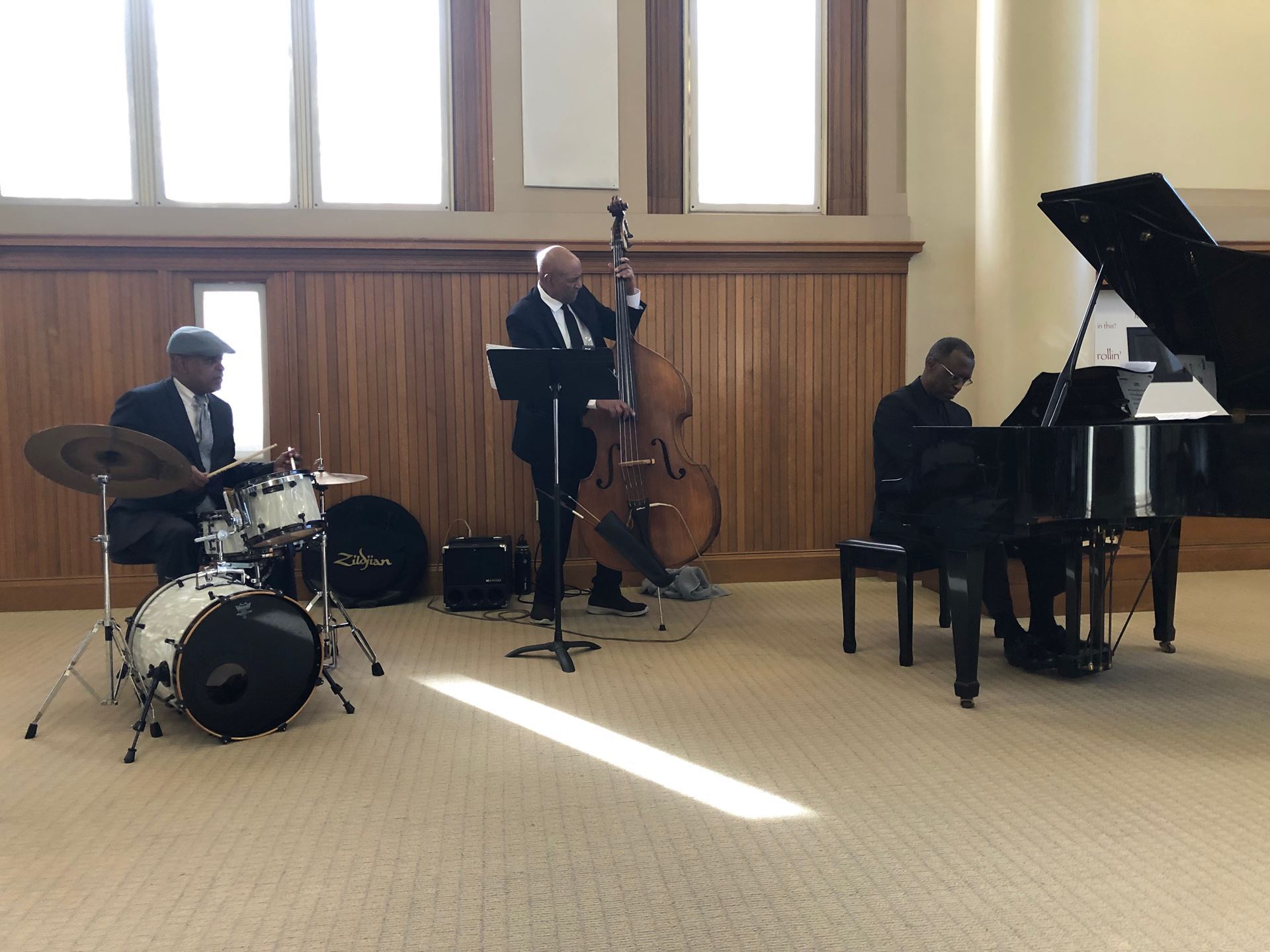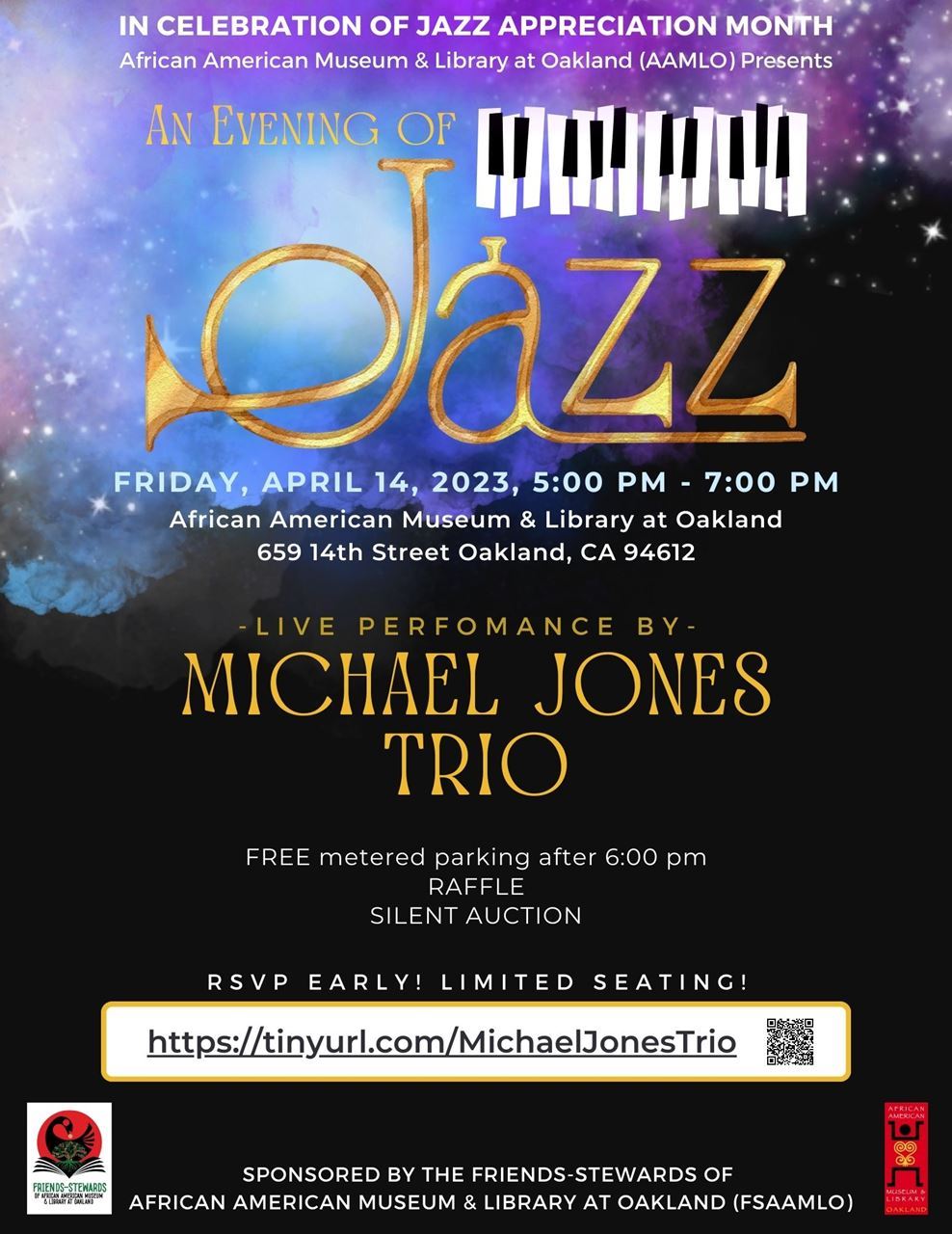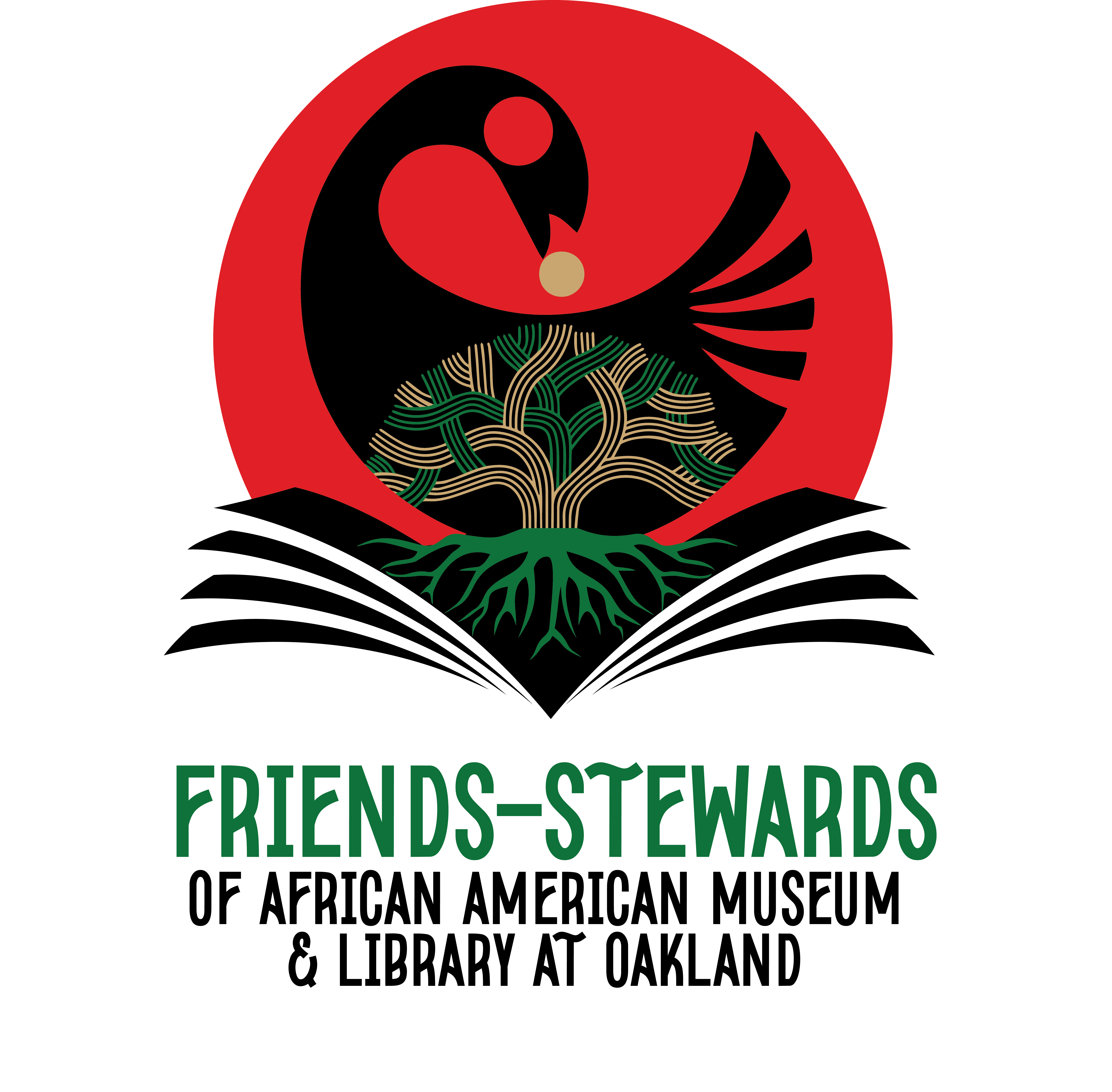
From left to right: drummer Randy Ranzel Merritt, bassist Michael Jones, pianist Glen Pearson
Jazz Appreciation Month at the AAMLO came and went in the blink of an eye. I was honored to attend the evening of jazz with a live performance by the Michael Jones Trio on April 14th. I sat in the first row nodding my head and tapping my foot to the rhythm. I grew excited when I recognized one of their tunes from the Duke Ellington CD my mother used to play in the kitchen. As I looked around the room and saw others smiling upon recognizing the familiar tune, I realized just how tightly the fabric of jazz binds our history, culture and experiences together. The Michael Jones Trio consists of three members: bassist Michael Jones, pianist Glen Pearson, and drummer Randy Ranzel Merritt. As they played together, weaving in and out of solos effortlessly, I could see they had a musical bond that must have taken years to develop. As it turns out, their relationship goes back to the early 80s. Some time after the performance, the bass player Michael Jones was kind enough to offer his time and tell me a bit more about his story and how he started playing jazz music.
Michael Jones is originally from Denver, Colorado. His earliest exposure to jazz was at home as a child where his parents would play it during social events. Growing up in the early 60s, jazz was the standard music played by older Black people. The popular musicians at that time were John Coltrane, Miles Davis and Duke Ellington just to name a few. Michael first started off playing the clarinet in the Highlander Boys, a Denver organization with the purpose of developing young boys. He recalled the excitement when it was time for children to pick an instrument to play, “I was about 6. When it was time to play instruments, we saw Louis Armstrong playing on the Ed Sullivan Show, so every kid in the band wanted to play the trumpet. The band teacher had to talk kids into playing different instruments. My teacher told me my lips were too big to play the trumpet and encouraged me to play the sousaphone…He later told me that he was only trying to get me to play something else.”
Michael later picked up the bass in the late 60s and early 70s when garage bands were quite popular, “We played James Brown music, mostly rhythm blues and funk. The garage bands would have dances and battles of the bands. Back in the day we had music programs in schools, so it was more common for kids to know how to play instruments. One band I was really into was called the Mellow Moods. The jazz singer Dianne Reeves was one of the members.” Michael was surprised when I told him I had not heard the name Dianne Reeves before. I promised to do my homework and look her up. I later found that Reeves was raised in Denver, Colorado and studied classical voice at the University of Colorado. She went on to sing with big name artists such as the late Harry Belafonte. I later asked Michael how he got started playing the bass. He recalled that he started in high school when his band teacher needed him to play in the orchestra and even gave him lessons. He went on to do further studies in college, “When I went to college at University of Colorado, they wouldn’t let me major in music unless I played the string bass. [The string bass] became more me. I still teach electric bass, but I don’t play gigs anymore.” At this point, I was amazed at how many instruments Michael had studied before. To him, this was just normal, and he shared with me that quite a few of his musician friends also dabble in different instruments.
Michael also reminisced about the importance of music in the Black community back in those days and how the Black radio station was a tool to talk to Black people, “In those days we didn’t have video games. Music meant more. The way people look at their phones nowadays, people listened to records in those days. Most people went to church back then and Black folks had exposure to music through there too. We also had Black radio stations that would play all the music coming out. There would be a new star every two weeks and someone else would have a hit. There’s no cultural connection to our community in the media anymore.” Michael explained how when Bill Clinton introduced the Telecommunications Act of 1996, it allowed larger media groups to swallow up smaller media groups. As a result, we lost nearly all locally-owned and African-American operated stations to larger media moguls, “When we did that we lost control of our music and the ability to control what we like and to make new stars. Everything went underground and then rap started in the late 80s and 90s. When rap started, it wasn’t controlled by Black record producers like Barry Gordy, kids could do whatever they wanted. That was the thing that was being sold as Black culture. There used to be a process of jazz hits, where people would determine the best music. Now stations like KCSM only play music once or twice, but their board controls the music. We don’t have Black ownership anymore, that’s why it’s important we get reparations.”
Michael told me how he has witnessed the Bay Area Black community dwindle since he first came in 1976, “When I first came, Oakland was considered the Black capital of the West. Everyone knew where the African American Museum and Library at Oakland was. Everybody who lived on the other side of the freeway was Black, all the way up to Chinatown even in North Oakland. There was a time when certain investors wouldn’t invest in neighborhoods in Oakland. But that changed ten years ago. We’ve been under full steam attack for at least 30 years. Now the whole of Oakland is completely gentrified.” We took a moment to reflect on all the new expensive highrises popping up in Downtown Oakland and along Telegraph, how the demographics of our own neighborhoods are changing before our very eyes. Still, Michael continues to work tirelessly to preserve Black music culture and promote young Black jazz artists. He is a member of the Friends of Golden Gate Library where he curates the summer jazz series, a program started in 1990 by the late Philadelphia jazz musician Donald Duck Bailey. Michael books youth musicians to open the show before the main act. He recalled with pride that many of the famous musicians from Oakland came through the program such as Abrose Akinmusire and Howard Wiley. This summer’s jazz series will start Sunday July 16th from 2:30pm to 5pm at the Golden Gate Library. Performances are the same time every Sunday and will end on August 20th.
Though Jazz Appreciation Month has come to a close, we can continue to celebrate jazz throughout the year, whether through the summer jazz series at Golden Gate Library or listening to old jazz CDs and recalling the tunes of our childhood. I certainly walk away from this month not only appreciating the music, but also honoring the history, legacy and people behind jazz music.

